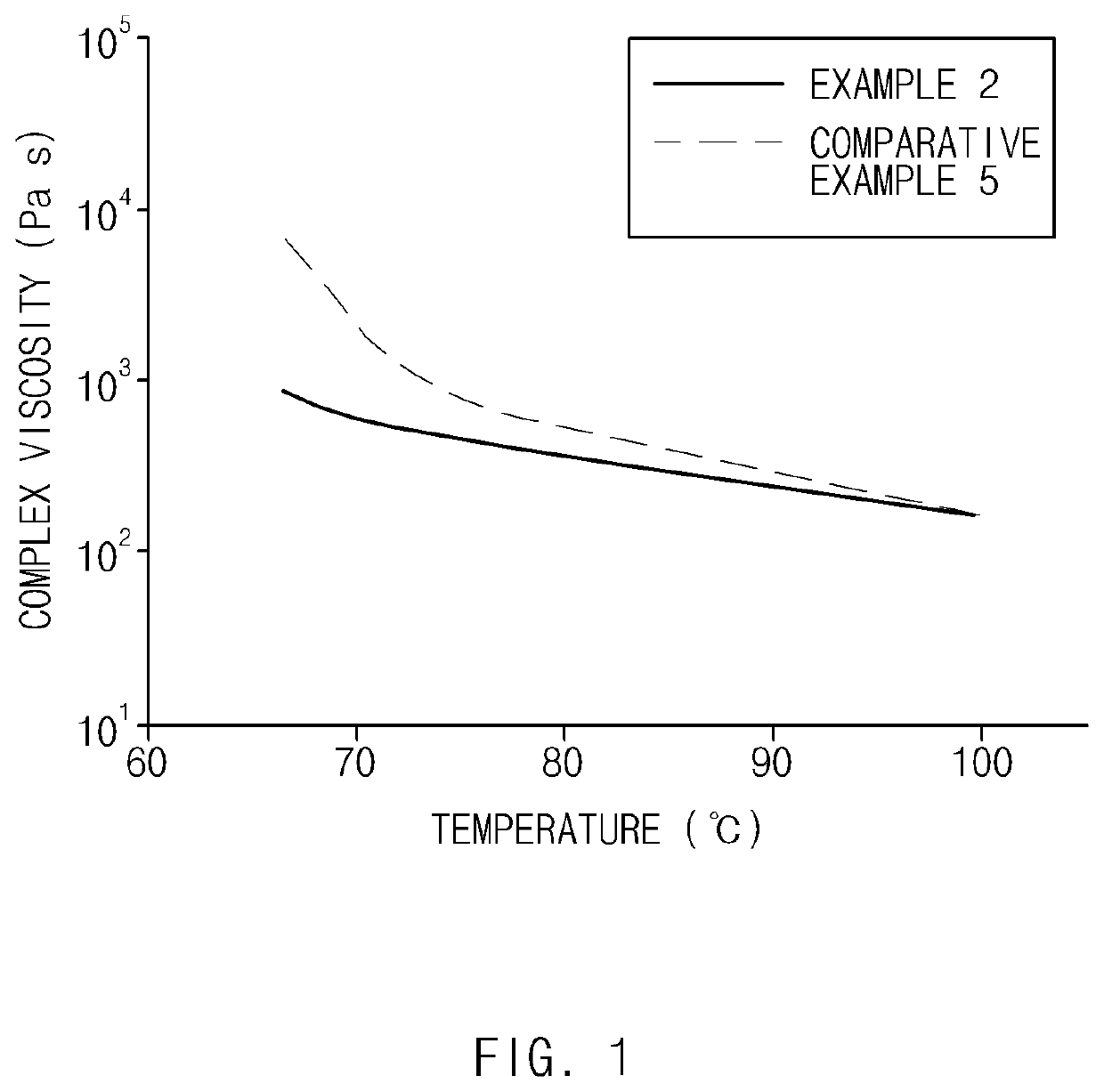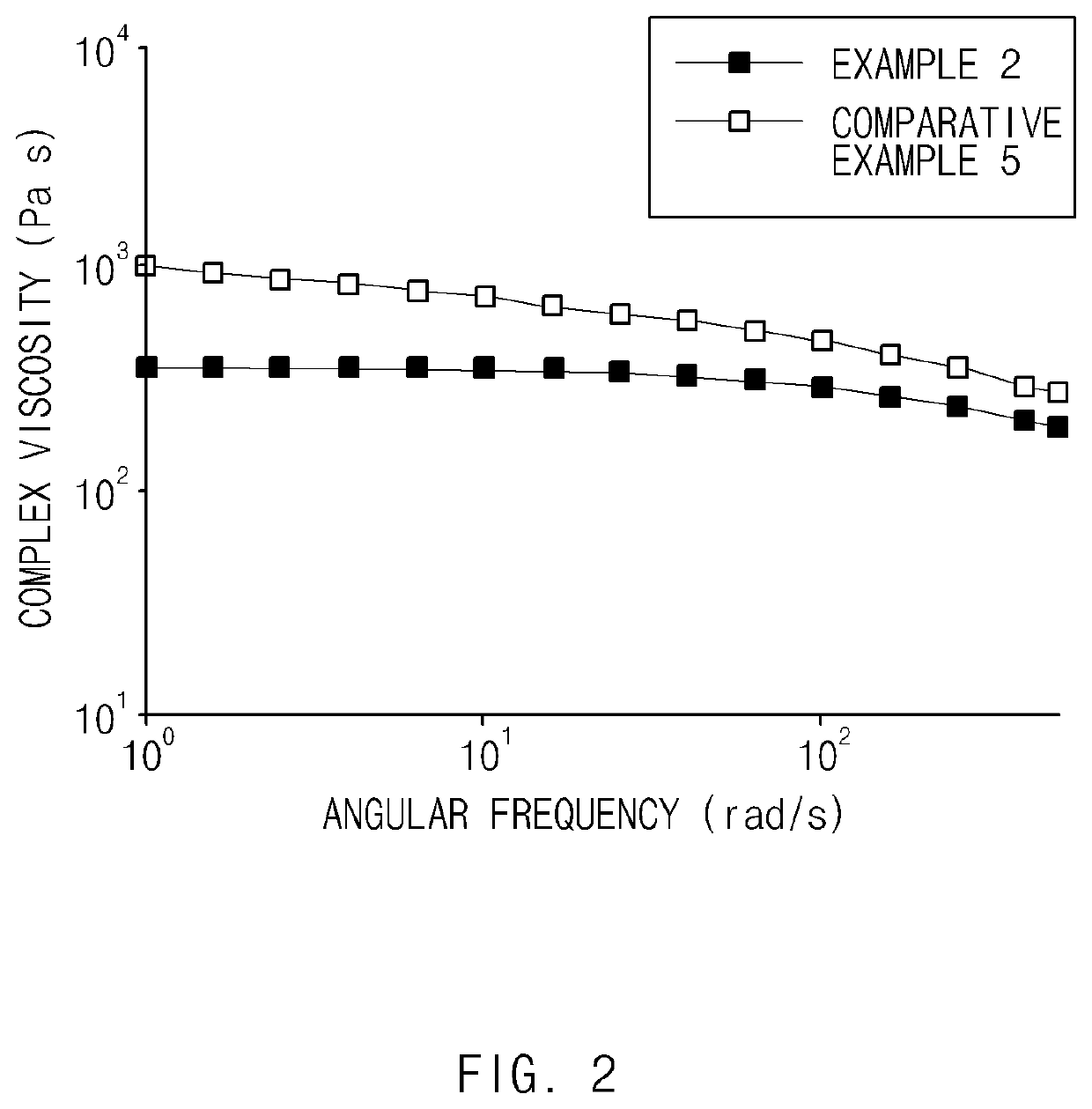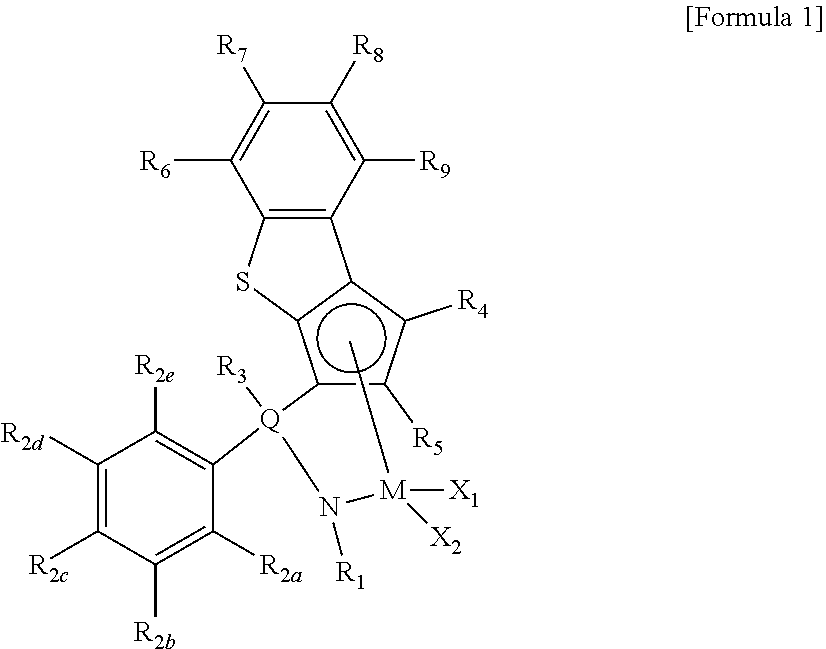Ethylene/Alpha-Olefin Copolymer and Method for Preparing the Same
a technology of alpha-olefin and copolymer, which is applied in the direction of adhesives, etc., can solve the problems of inconvenient support of metallocene catalysts used on individual supports, limited securing desired physical properties, and high preparation time of solvent used for preparing supported catalysts, etc., to achieve excellent impact strength and mechanical properties, low density, and low molecular weight
- Summary
- Abstract
- Description
- Claims
- Application Information
AI Technical Summary
Benefits of technology
Problems solved by technology
Method used
Image
Examples
example 1
[0141]Into a 1.5 L autoclave continuous process reactor, a hexane solvent (5.0 kg / h) and 1-octene (1.20 kg / h) were charged, and the top of the reactor was pre-heated to a temperature of 150° C. A triisobutylaluminum compound (0.05 mmol / min), the transition metal compound (1a) (0.40 μmol / min) prepared in the Synthetic Example as a catalyst, and a dimethylanilium tetrakis(pentafluorophenyl) borate promoter (2.40 μmol / min) were injected into the reactor at the same time. Then, into the autoclave reactor, ethylene (0.87 kg / h) and a hydrogen gas (85 cc / min) were injected and copolymerization reaction was continuously carried out while maintaining a pressure of 89 bar and a polymerization temperature of 123.9° C. for 60 minutes or more to prepare a copolymer.
[0142]Then, a remaining ethylene gas was exhausted out and the copolymer-containing solution thus obtained was dried in a vacuum oven for 12 hours or more. The physical properties of the copolymer thus obtained were measured.
experimental example 1
[0148]With respect to the ethylene / alpha-olefin copolymers prepared in the Examples and the Comparative Examples, physical properties were measured according to the methods described below and are shown in Table 2.
[0149]1) Density (g / cm3): measured according to ASTM D-792.
[0150]2) Viscosity (cP): measured using a Brookfield RVDV3T viscometer and according to the method described below. In detail, 13 ml of a specimen was put in a specimen chamber and heated to 180° C. using Brookfield Thermosel. After the specimen was completely dissolved, a viscometer equipment was lowered to fix a spindle to the specimen chamber, the rotation speed of the spindle (SC-29 high temperature-melt spindle) was fixed to 20 rpm, and viscosity values were deciphered for 20 minutes or more, or until the value was stabilized, and a final value was recorded.
[0151]3) Melt index (MI, dg / min): the melt index (MI) of a polymer was measured according to ASTM D-1238 (condition E, 190° C., 2.16 kg load).
[0152]4) Weig...
experimental example 2
[0167]With respect to Example 2 and Comparative Example 5, viscosity change was measured while fixing a frequency to 6.28 rad / s (1 Hz) and elevating the temperature, and shown in FIG. 1, and viscosity change was measured while changing an angular frequency at 80° C. and shown in FIG. 2. The measurement method of the viscosity was the same as described above.
[0168]In FIG. 1, Example 2 shows a low complex viscosity in all temperature regions when compared with Comparative Example 5 which showed similar density. Accordingly, the ethylene / alpha-olefin copolymer of the present invention may be processed at a low temperature, and the load on the equipment during processing a product is small to increase an output, thereby showing advantages considering energy efficiency.
[0169]In addition, in FIG. 2, the viscosity change data according to the change of the angular frequency, were obtained by measuring viscosity in an angular frequency range of ω=1-500 rad / s so as to imitate a circumstance ...
PUM
| Property | Measurement | Unit |
|---|---|---|
| temperature | aaaaa | aaaaa |
| viscosity | aaaaa | aaaaa |
| viscosity | aaaaa | aaaaa |
Abstract
Description
Claims
Application Information
 Login to View More
Login to View More - R&D
- Intellectual Property
- Life Sciences
- Materials
- Tech Scout
- Unparalleled Data Quality
- Higher Quality Content
- 60% Fewer Hallucinations
Browse by: Latest US Patents, China's latest patents, Technical Efficacy Thesaurus, Application Domain, Technology Topic, Popular Technical Reports.
© 2025 PatSnap. All rights reserved.Legal|Privacy policy|Modern Slavery Act Transparency Statement|Sitemap|About US| Contact US: help@patsnap.com



